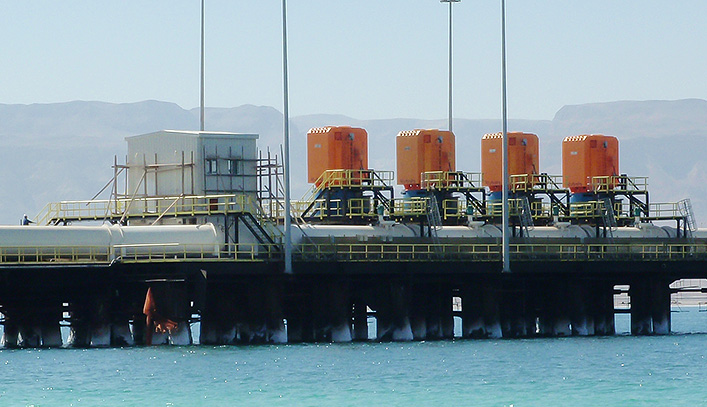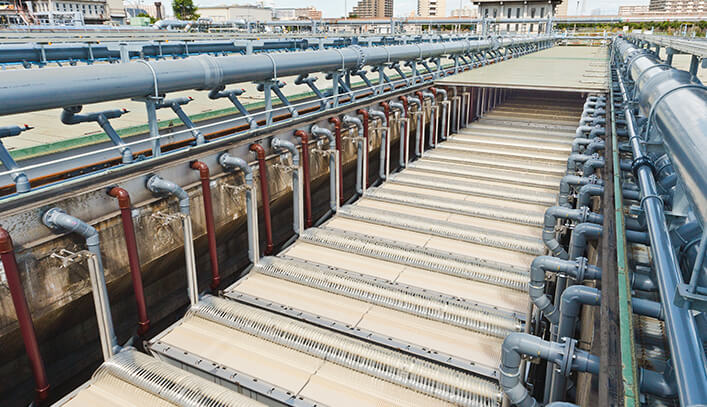KUBOTA TECHNICAL REPORT No.52 JANUARY 2019
Feature Theme: No.52 Working on SDGs
This 52nd issue of the Kubota Technical Report is specially themed around the topic of “Working on SDGs.” We recognize that our brand statement “For Earth, For Life” and our mission “contributing to the world in the areas of food, water, and the environment” are same as what SDGs is aming for. Kubota is making efforts in many themes that contribute to SDGs through our products, technology, and services. This issue includes those items that are deeply connected to SDGs, so we hope that you read this report and deepen your understanding of SDGs and Kubota's efforts.

Keynote article
“For Earth, For Life” Kubota’s Engagement in SDGs and Continuing Contributions
Kubota Group works on the SDGs, which are the common development goals for the international community, and is challenging to solve global issues through its business activities.
Feature Text

Development of a Wheel Combine Harvester for ChinaCombine Harvester Engineering Dept.
Kubota developed a wheel combine harvester for China in order to enter dry-field markets. There are two main demands in the target area: a compact machine with high mobility and a profitable machine with high efficiency. To satisfy customer demands, we developed a unique layout that makes the machine compact and improve operability. Moreover we sped up grain unloading, developed a thresher for wheat, and improved maintainability. The new machine ensured high mobility suited to field conditions and road conditions in the target area, and achieved high profitability exceeding that of the local competitor. The development technology in this product development is tied to “productivity improvement of an agricultural machine and an increase of the income”, and can contribute to the eradication of poverty and hunger.
Here we show the technical development for high mobility, high efficiency and high operation availability.
- Dry-field Farming Markets
- Wheel Combine Harvester
- High Mobility
- High Efficiency
- High Operation Availability
- Poverty and Hunger
- 【Related SDGs】
-

Development of an Agrochemical Applicator for Direct Seeding with Iron-coated Rice SeedsTransplanter Engineering Dept.
The KUBOTA group has encouraged the spread of the method of direct seeding of iron-coated rice seeds, which meets the increasing demand for low-cost and labor-saving in domestic rice cultivation. As a consequence of the activity, the method has become prevalent among large-scale farmers and the cultivated area has also been expanding. However, the method had the problem that it needed to apply insecticides and fungicides after seeding because of the non- existence of a simultaneous application technique of those agrochemicals for direct rice seeding. In order to improve the labor- saving effect of direct rice seeding, we newly developed a simultaneous agrochemical applicator for direct rice seeding ahead of our competitors, involving the agrochemical industry. This paper describes our efforts in development.
- Direct Seeding with Iron-coated Rice Seeds
- Labor Saving
- Agrochemical Applicator
- 【Related SDGs】
-

Research of the Performance in the Field of the Energy Saving Air Diffuser K-membrane Installed in Sewage Treatment PlantsEnvironmental Engineering Dept.
Kubota developed a low pressure loss membrane diffuser (referred to as K-membrane) in order to reduce energy consumption in sewage treatment plants.
K-membrane was adopted in 39 plans in Japan and overseas. We investigated the performance of K-membrane installed in sewage treatment plants and confirmed K-membrane had long-term high performance. We report the results in this paper. In
- Low Pressure Loss Membrane Diffuser
- Energy Saving
- Oxygen Transfer Efficiency
- Swing Reactor
- 【Related SDGs】
-
Development of the MBR Control System for the North American MarketMembrane Systems Dept.
Membrane Bioreactor (MBR) is a treatment method suitable for the reuse of treated water. For SDGs to be achieved, it is necessary to reduce the cost of the MBR system in order to increase the availability of this technology. Therefore, we aimed at cost saving by establishing the MBR control method. In this development, control specifications were decided based on findings on MBR possessed by KUBOTA and by conducting experiments. Then, the sustainability of membrane filtration was demonstrated through testing in municipal MBR systems with this control. In conclusion, we showed that more efficient MBR processing is possible, and accordingly, we succeeded in making a lower cost MBR system that can be designed with 10% increase in flux and up to 30% reduction in the air scour rate compared with the MBR system without this MBR control system.
- MBR
- KUBOTA Submerged Membrane Unit®
- Control System
- Cost Saving
- 【Related SDGs】
-

Development of the Minimal Swing Radius Type Mini Backhoe RX-506 for the Japanese MarketConstruction Machinery Engineering Department for Excavator
The new minimal swing radius type mini backhoe RX-506 which has been placed on the Japanese market was developed as a new model to meet new emission regulations in Japan. This model was developed aiming at differentiation from the competitor‘s model by attaching added value that can maintain cost performance against an increase in the selling price due to the new emission regulations, and retains the basic performance of the current model which obtained a good reputation. The following three points represent the added value of the RX-506. 1. KUBOTA original energy saving mode system. 2. New development of front attachments. 3. Improvement of maintenance.
- Mini Backhoe
- Emission Regulations
- Energy Saving Mode
- Variable Gain Control Routed the Front Hose Through the Front Inside
- One Side Maintenance
- 【Related SDGs】
-
Utilization of Waste Polyvinyl Chloride in the Volume Reduction of Radioactive Waste Using Melting TechnologyWater and Environment R&D / KUBOTA Environmental Service Co.,Ltd. / Kubota ChemiX Co.,Ltd.
Kubota‘s melting technology has been utilized for the recycling of various solid wastes, and it can also be applied as a volume- reduction (Cs separation) technology of radioactive waste by the addition of chloride. Since the Fukushima nuclear accident, we have carried out demonstration test as volume-reduction technology. Calcium chloride has been used as chloride, but if waste polyvinyl chloride (PVC) can be used, other effects can be expected and the recycling of vinyl chloride will be promoted. Therefore, in this report, melting plant test was conducted using waste PVC, and it was demonstrated that the Cs separation effect of waste PVC was as high as that of calcium chloride.
- Melting
- Radioactive Waste
- Volume Reduction
- Waste Polyvinyl Chloride
- 【Related SDGs】
-
Feature Technical Report
- Development of the Compact Johkasou KRZ Type for Large Scale Facilities
What are the SDGs?
They are the 17 goals set jointly by the nations around the world regarding issues to be tackled in cooperation. It was adopted at the United Nations Summit in 2015 with 2030 as the target year by which to address the goals. “Sustainable Development Goals” is abbreviated as SDGs.









